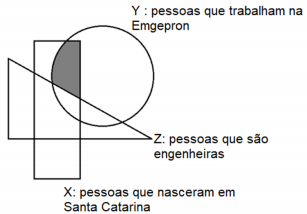Questões de Concurso
Para emgepron
Foram encontradas 1.817 questões
Resolva questões gratuitamente!
Junte-se a mais de 4 milhões de concurseiros!
Text
What is Engineering Mind-set thinking?
Engineering Mind-set Thinking is a way of thinking that combines the problem solving/design process with the life-skills that fosters dealing with others as in a team. It provides the culture, measurements, feedback, planning skills, tools and values of engineering without the high level knowledge of math and science (Content Knowledge). Mastering this way of thinking is important for all students, regardless of their career objectives.
You can integrate Engineering mind-set thinking into an existing curriculum by including project-based, experiential focus on all social skills that connect people & society to create a better design and problem-solving solution. It's the culture & tools for thinking. Away of thinking for an entire organization.
The process is not only about solving problems but also about interfacing with people and the community to communicate background information about the problem. In the business world this means having empathy with your customer. The mindset is breaking the problem into manageable chucks to better understand the problem, taking a system view (inputs & outputs) of the problem and seeing the right issues are addressed for the needs of the community. It's being a leader of your learning environment and taking ownership and responsibility of the project. Engineering mindset also means seeing problems as opportunities and the fun in solving those problems.
Adapted from: https://cdn.websiteeditor.net/06ca7b6b3119475dafa9b75f534f6827/files/uploaded/
Engineering-Mind-set-summary-13.pdf Accessed on April 5,
2021.
Text
What is Engineering Mind-set thinking?
Engineering Mind-set Thinking is a way of thinking that combines the problem solving/design process with the life-skills that fosters dealing with others as in a team. It provides the culture, measurements, feedback, planning skills, tools and values of engineering without the high level knowledge of math and science (Content Knowledge). Mastering this way of thinking is important for all students, regardless of their career objectives.
You can integrate Engineering mind-set thinking into an existing curriculum by including project-based, experiential focus on all social skills that connect people & society to create a better design and problem-solving solution. It's the culture & tools for thinking. Away of thinking for an entire organization.
The process is not only about solving problems but also about interfacing with people and the community to communicate background information about the problem. In the business world this means having empathy with your customer. The mindset is breaking the problem into manageable chucks to better understand the problem, taking a system view (inputs & outputs) of the problem and seeing the right issues are addressed for the needs of the community. It's being a leader of your learning environment and taking ownership and responsibility of the project. Engineering mindset also means seeing problems as opportunities and the fun in solving those problems.
Adapted from: https://cdn.websiteeditor.net/06ca7b6b3119475dafa9b75f534f6827/files/uploaded/
Engineering-Mind-set-summary-13.pdf Accessed on April 5,
2021.
Considerando-se a seguinte proposição:
Se Carlos mora no Brasil, então Ana não fala japonês.
A negação da proposição acima está indicada corretamente na seguinte opção:
Considere-se os conjuntos X, Y e Z e a representação gráfica a seguir:

Se João é um elemento que pertence à região sombreada, então necessariamente, João: